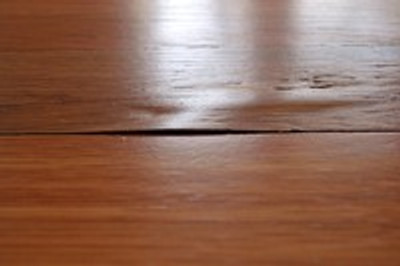Does Wood Shrink Over Time?
4th Feb 2015
 Exotic wood is undoubtedly one of the best materials for any
type of home or office project. It has a timeless, classic beauty coupled with
strength and durability that can last for ages.
Exotic wood is undoubtedly one of the best materials for any
type of home or office project. It has a timeless, classic beauty coupled with
strength and durability that can last for ages.
However, like any natural material, exotic wood has a weakness, too. It is vulnerable to shrinkage brought about by climate and temperature changes.
Generally, wood shrinks the most after the felling process. This is because much of its water content is removed during tree cutting. Then, it will continue to shrink gradually during the drying stage. This may take several years, depending on the type of wood, how it was cut, the weather and humidity in the area where it will be dried.
A block of wood or a piece of lumber has three areas: radial, longitudinal and tangential. Of the three, the longitudinal is where there is the least amount of shrinkage, which makes it invisible to the human eye and thus, does not affect the overall appearance of a project.
Expert woodworkers know that shrinkage occurs more in the radial and tangential areas. As such, they saw wood in a way that will minimize further shrinking. They are aware that the wrong cutting of wood will lead to inferior seasonal projects.
How Does Shrinkage Affect Wood Projects?
As mentioned earlier, improperly dried wood can lead to inferior projects. It can cause:
- 1.Poor fitting of mating parts. This is especially true for miter joints that should fit each other perfectly in order to create a sturdy piece of furniture. When wood moves due to shrinkage, this creates a gap between the corners.
- 2.Gluing issues. Remember that the moisture in wood is not actually water but sap. This contains natural substances which may interfere with the glue’s bonding capacity. And, in many instances, DIY’ers tend to put more than enough glue to make the pieces of wood stick together. On the contrary, applying more glue can only make matters worse. This also applies to flooring materials.
- 3.Rusting of nails and screws. As we all know, nails and screws contain metals which, when attached to wet surfaces, will rust in time.
- 4. Cracking of finished surfaces. Veneer, laminate or other finishing surfaces tend to crack as the wood moves underneath.
Some people think that planning for shrinkage alone minimizes the chances of creating poor projects. They talk of giving allowances for shrinkage, creating trims to strengthen and protect joints and miters, etc.
Why take chances when you can buy thoroughly dried wood in the first place? Of course, this can be pricier than its semi-dried counterpart; but if you consider the disadvantages of using inferior types of wood for your projects, then the extra cost more than makes up for the price.
Just make sure that you purchase from a wood supplier who has a proven record of delivering well-dried wood and you can be assured of quality wood projects that you and your family will love.

